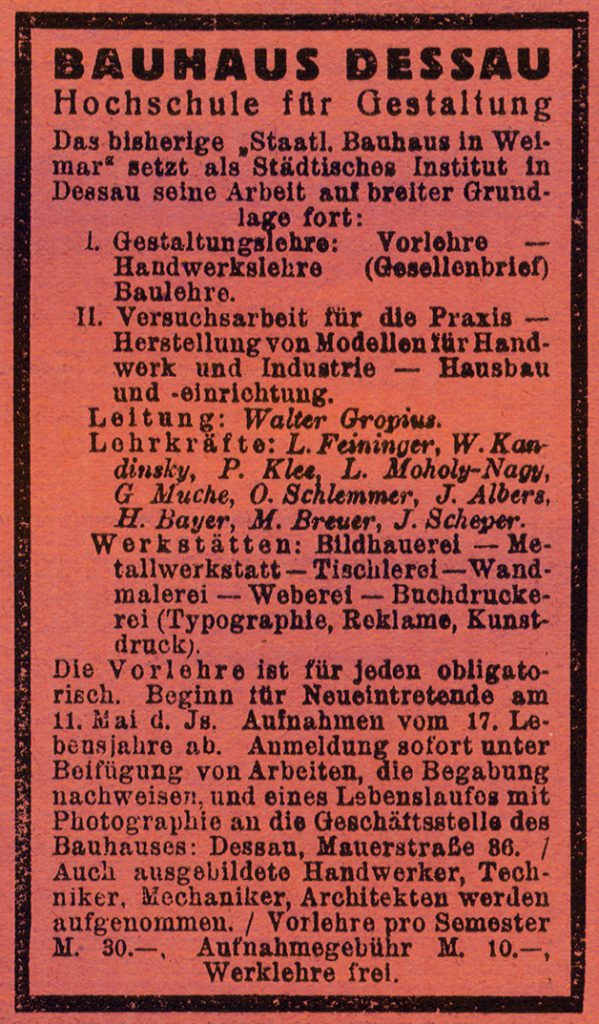Bauhaus > masters
At the Bauhaus school of design, many prominent artists, architects and designers were appointed Meister (masters). These included such illustrious names as Paul Klee, Lionel Feininger, Wassily Kandinsky, Oskar Schlemmer and Johannes Itten, whose works can still be seen in many museums and collections of Classical Modernism. With their life-reforming ideas and artistically abstract works, these masters shaped the early Bauhaus spirit in Weimar. Above all, the charismatic Johannes Itten played a special role. He was a follower of the exotic-esoteric Mazdaznan doctrine, which combined elements from various religious traditions. These traditions included vegetarian food as well as breathing and meditation exercises.
The Bauhaus quickly became as famous for its free thinking and unusual design as for its notoriously lively festivities. All this frightened the bourgeois-conservative community and increasingly led disgruntled Weimar residents to reject the Bauhaus. From around 1923, the school’s teachings shifted sharply towards industrial and rational design, which many critics regarded as cold and technocratic. In 1925, the Bauhaus moved its headquarters from sleepy Weimar to neighbouring Dessau, an up-and-coming industrial hub. In 1929, the Hungarian-born multimedia designer László Moholy-Nagy was appointed as a new master to succeed Itten. Other personalities such as Marianne Brandt, Lilly Reich and Gunta Stölzl as well as Josef Albers, Herbert Bayer, Marcel Breuer, Mart Stam, Gerhard Marcks, Adolf Meyer and Walter Peterhans were entrusted with individual workshops. Although the school was otherwise considered quite progressive, women were underrepresented among the masters.
Through various initiatives, some Bauhaus members maintained close contact with the architects of the World Heritage estates, including those in the craftsmen's association Deutscher Werkbund, the architects' association The Ring, and the Gläserne Kette group of letter-writers initiated by Bruno Taut.

